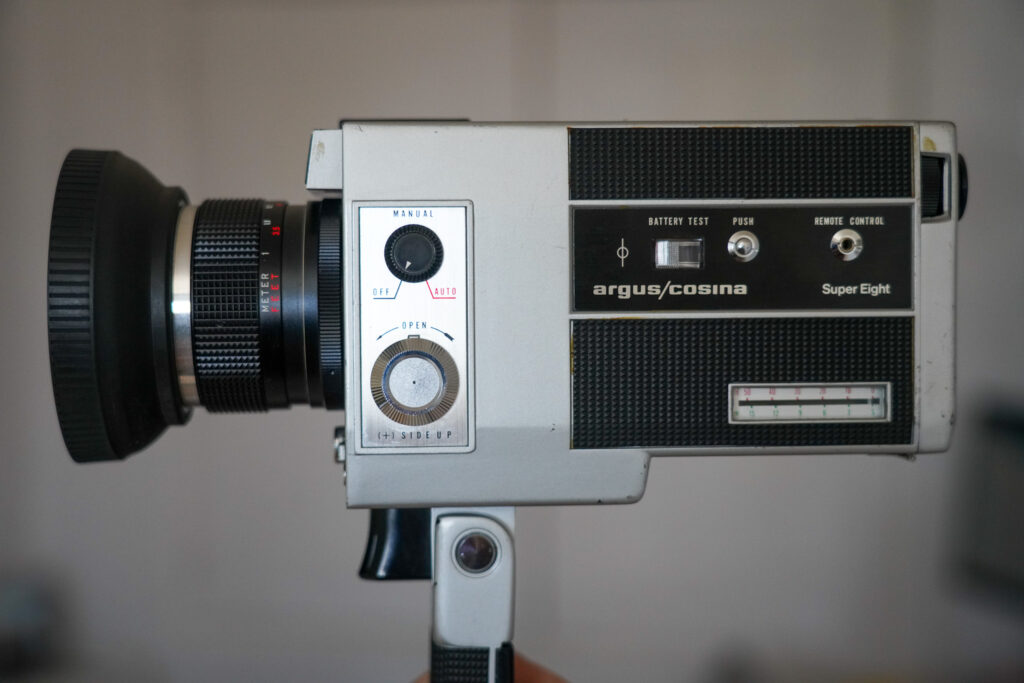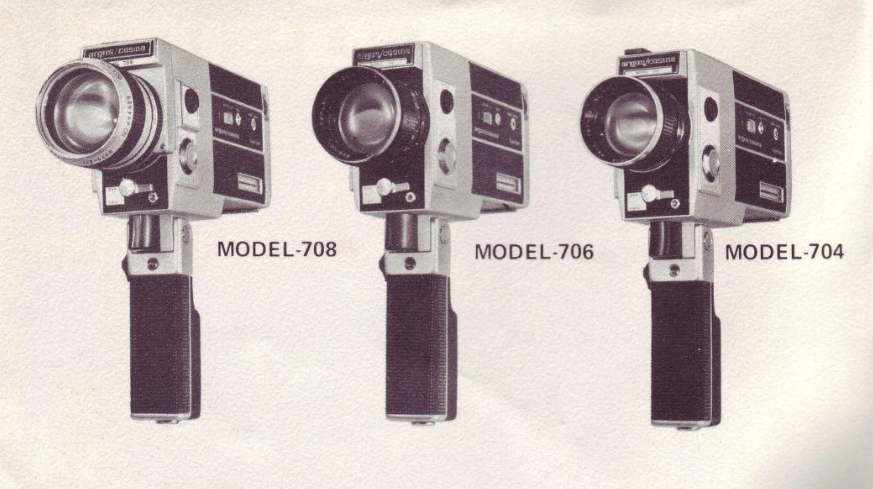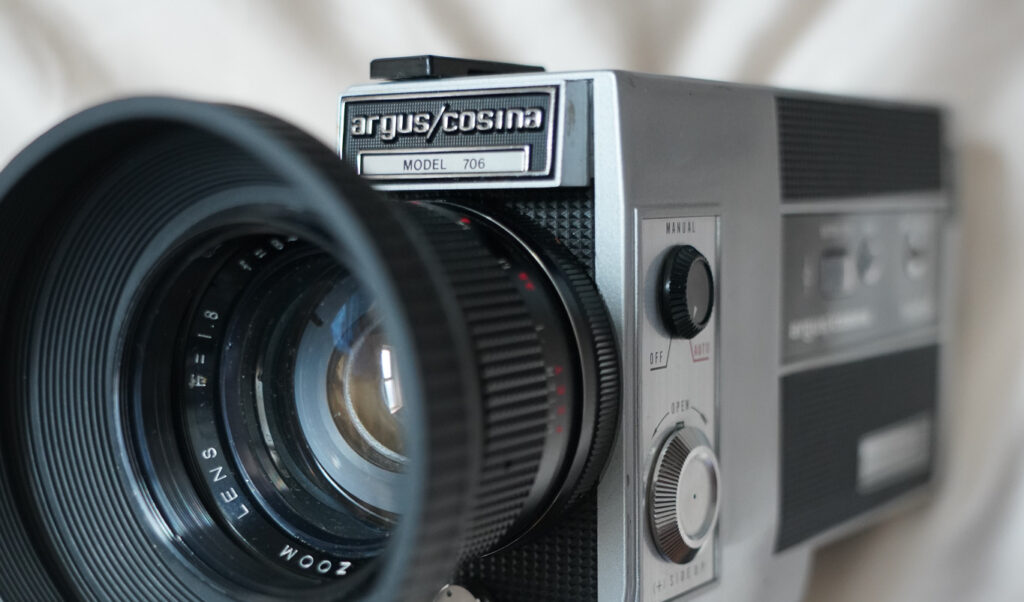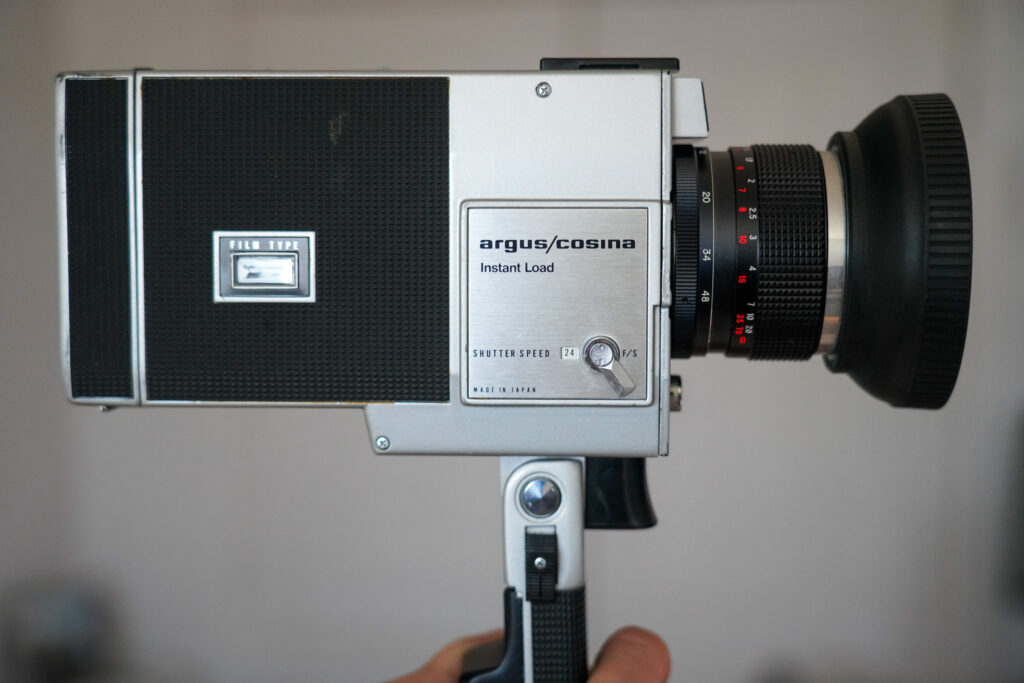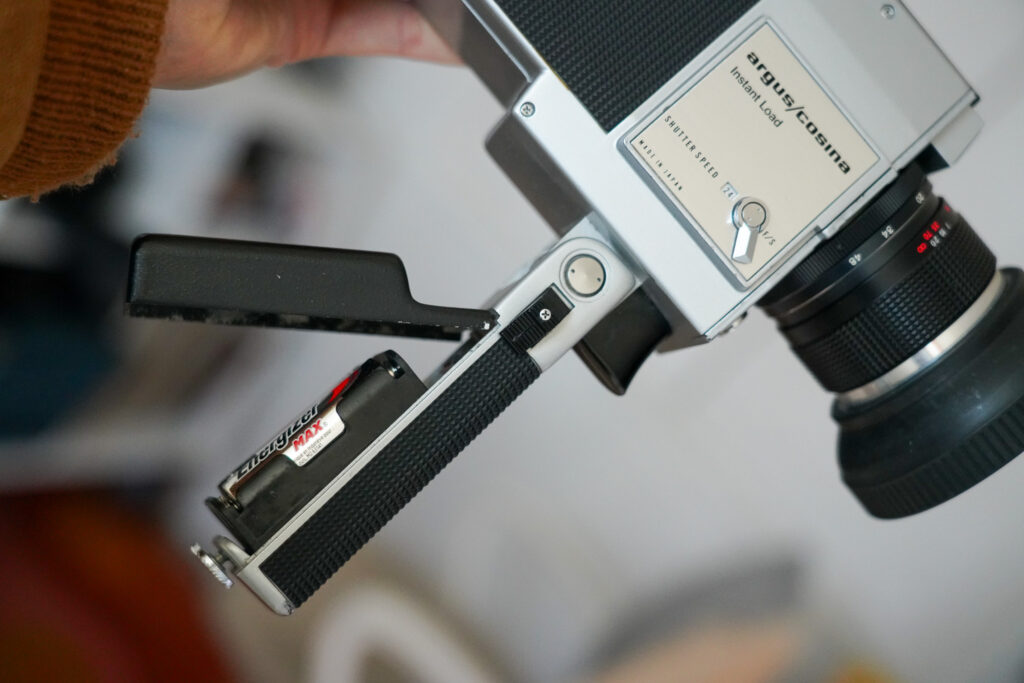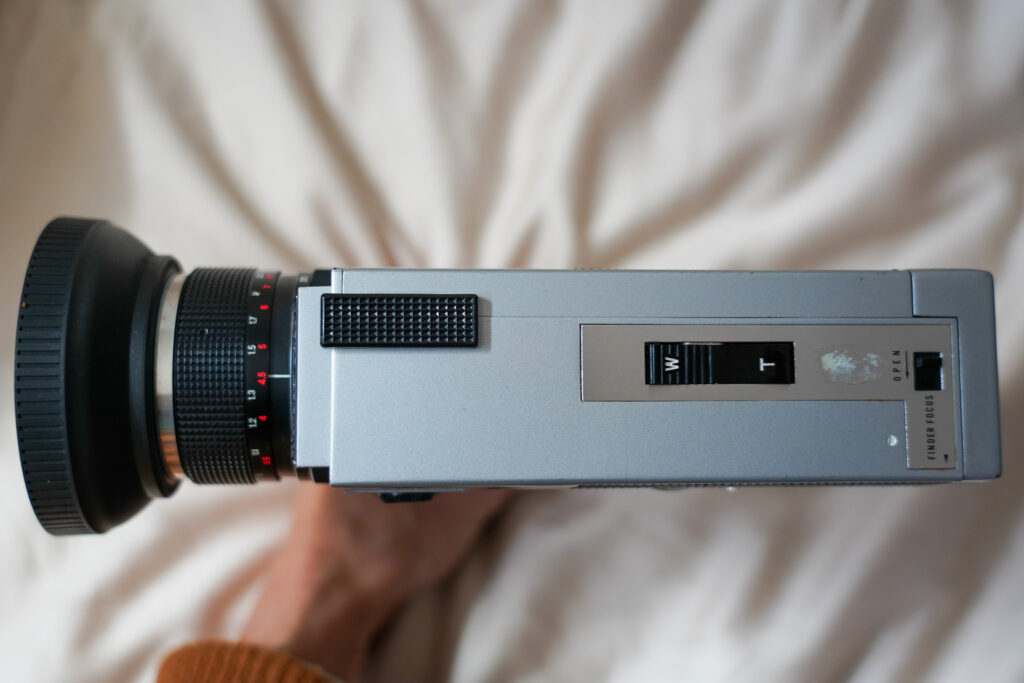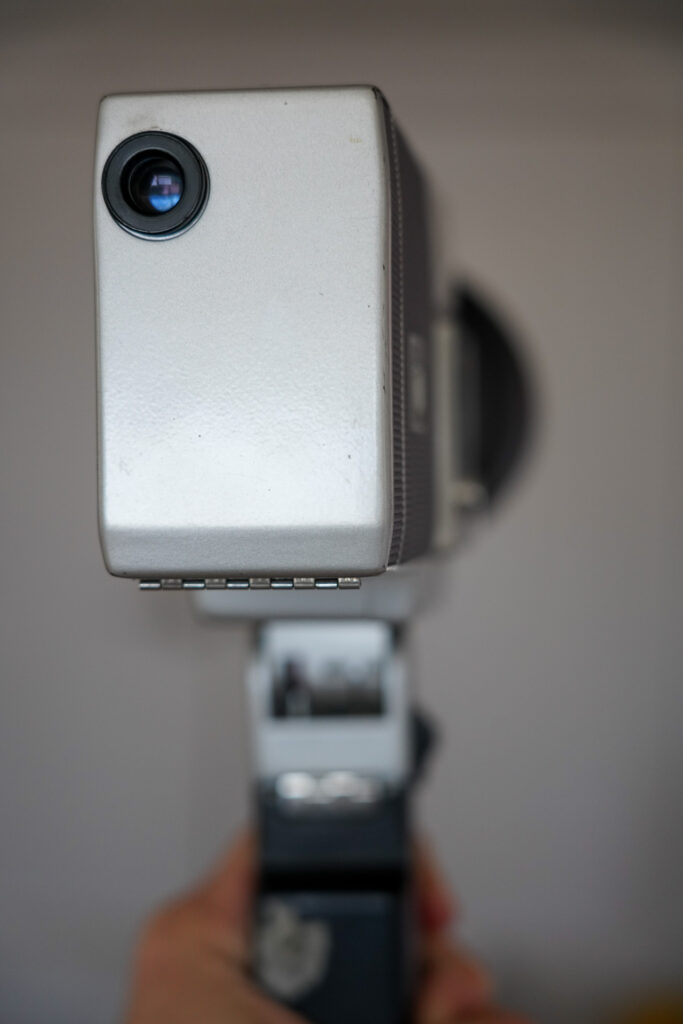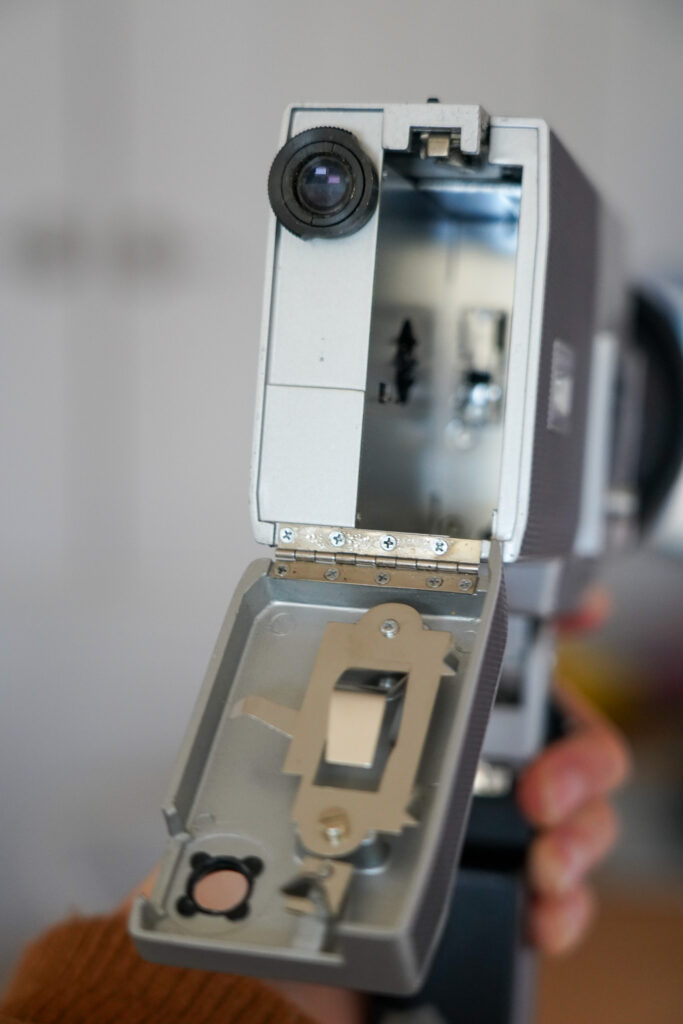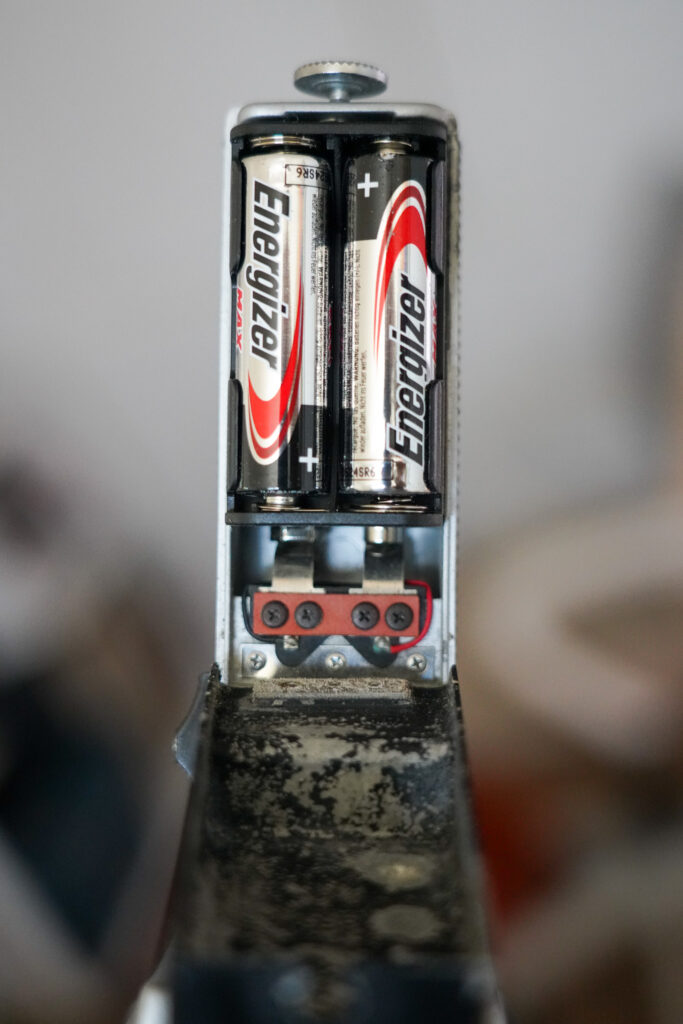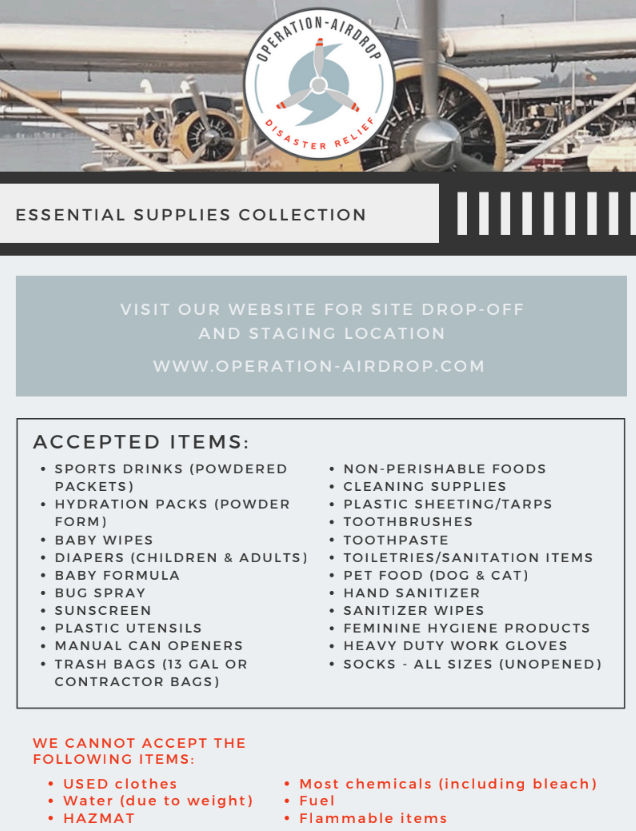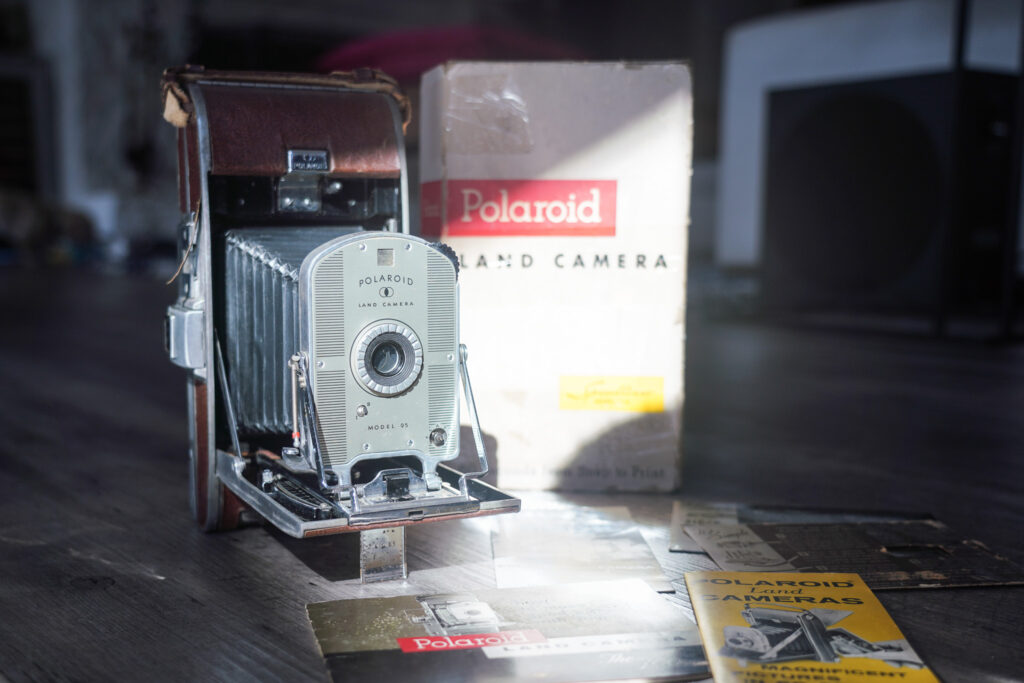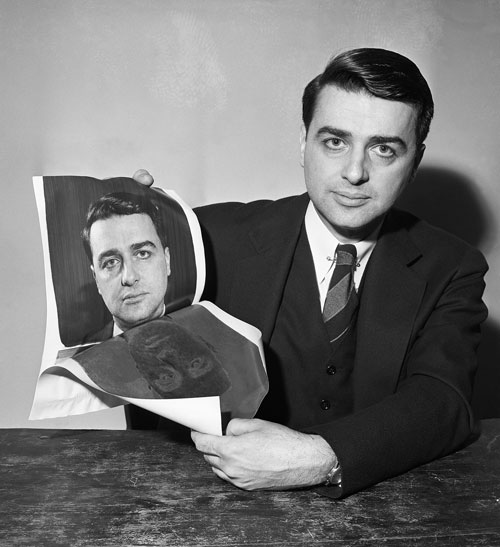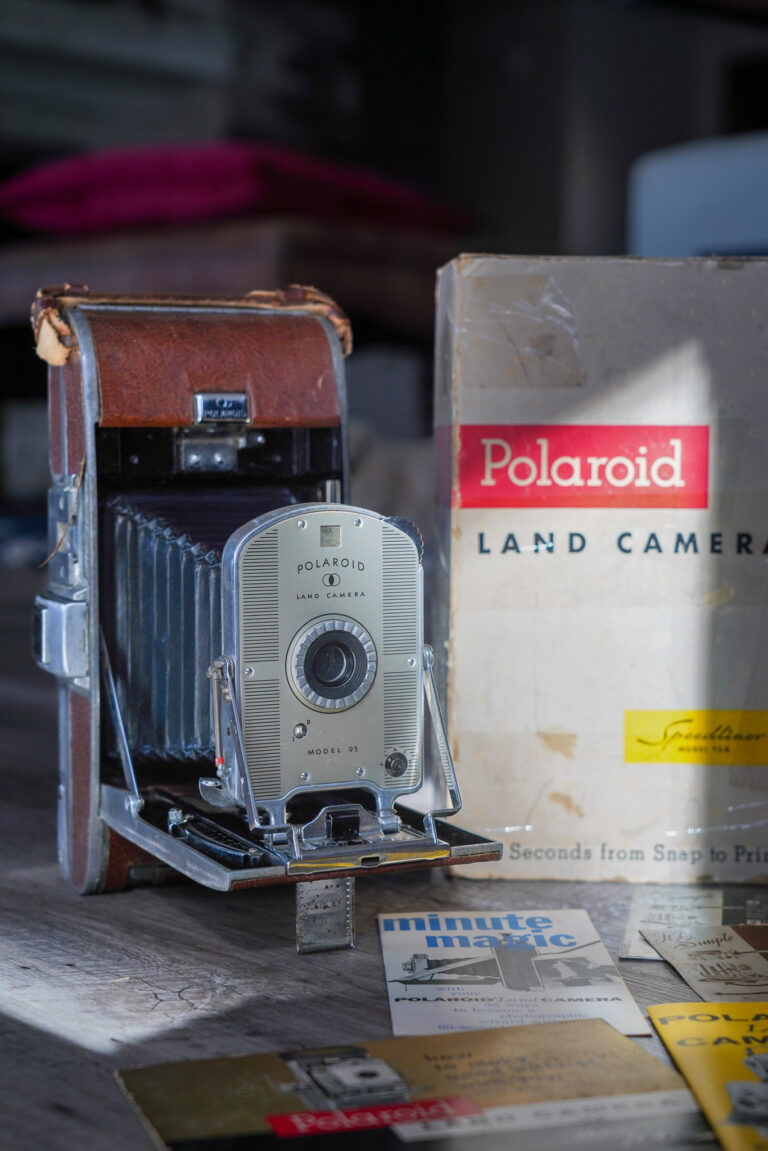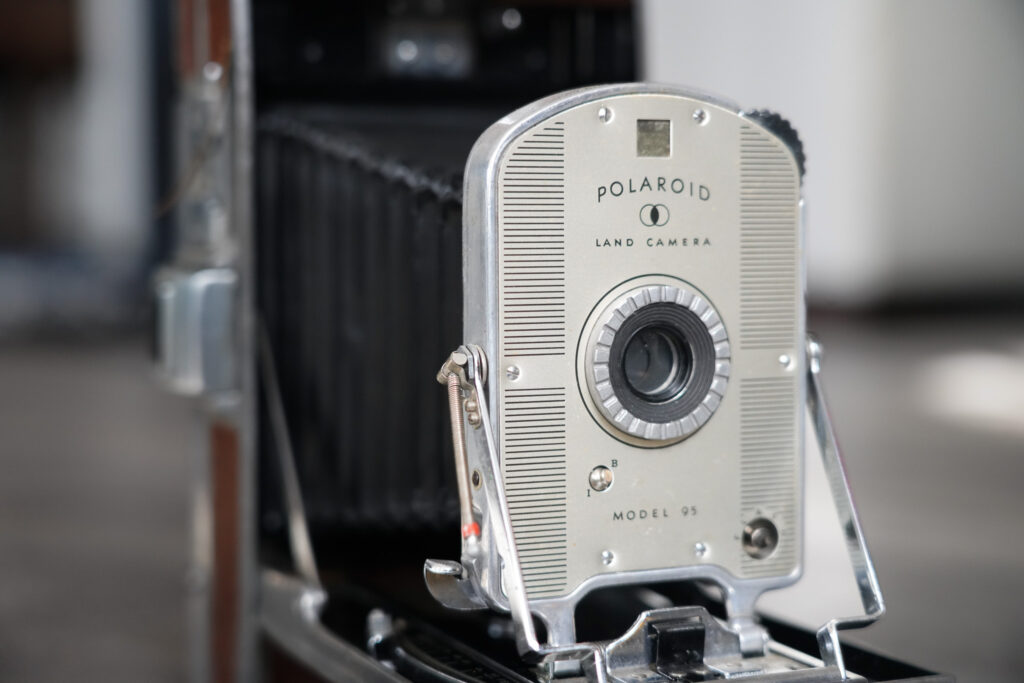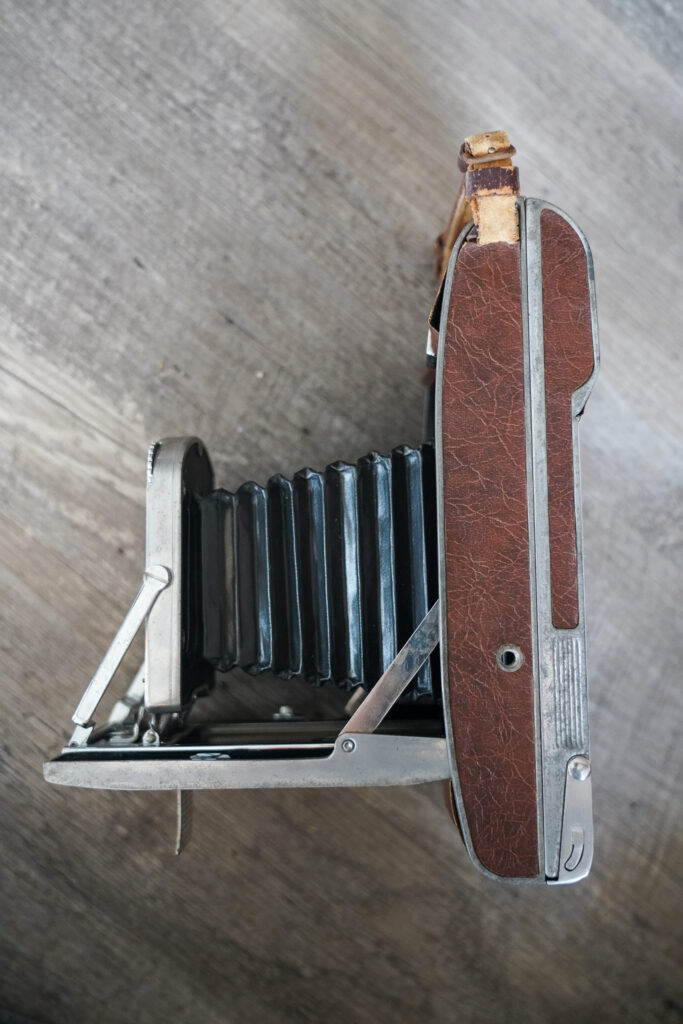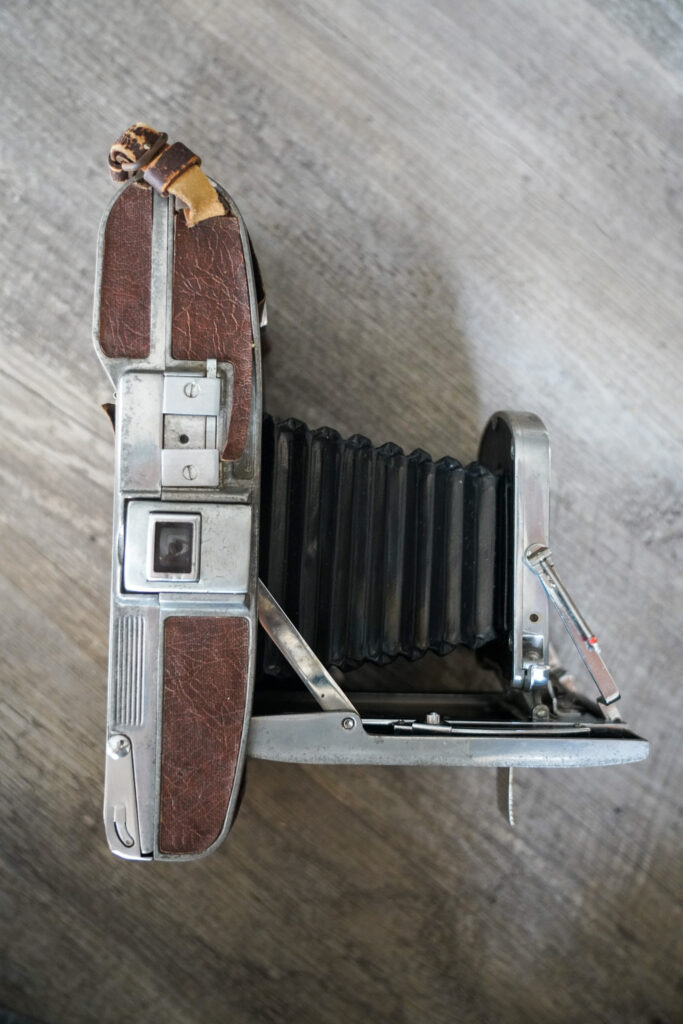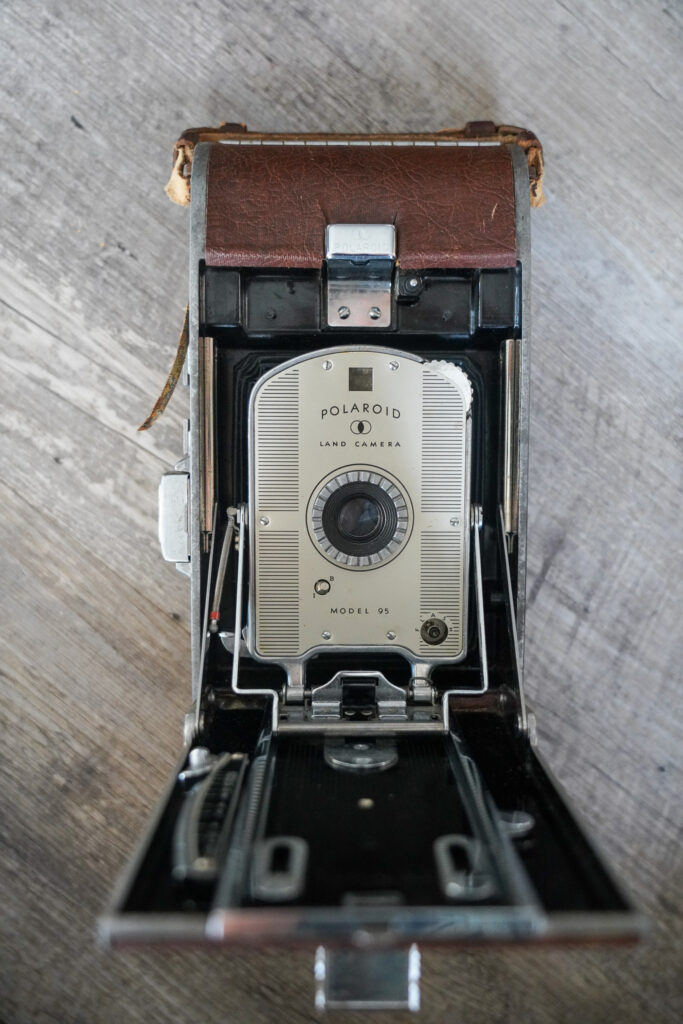This is where creativity meets curiosity. Join me as I dive into the world of photography, explore tools and techniques, chat about vintage cameras, and share insights from my latest adventures and projects.
Jump to a RECENT POST
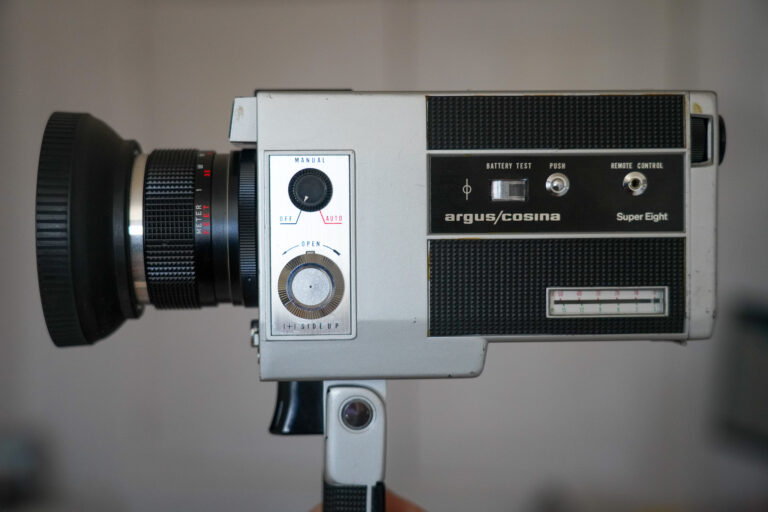
Argus Cosina 706 Super 8 Vintage Camera Review: Test Footage + First Impressions

San Diego People’s March 2025 Photos
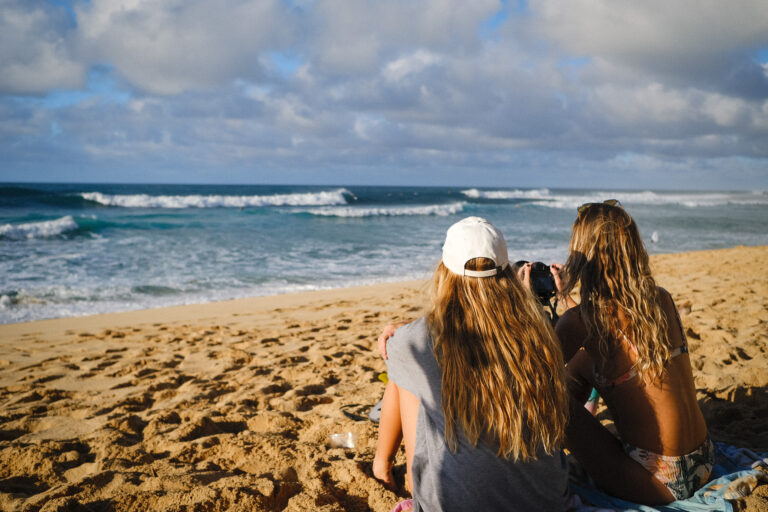
Guide to Ethical Photography & Photojournalism: Documenting With Empathy, Integrity, and Respect
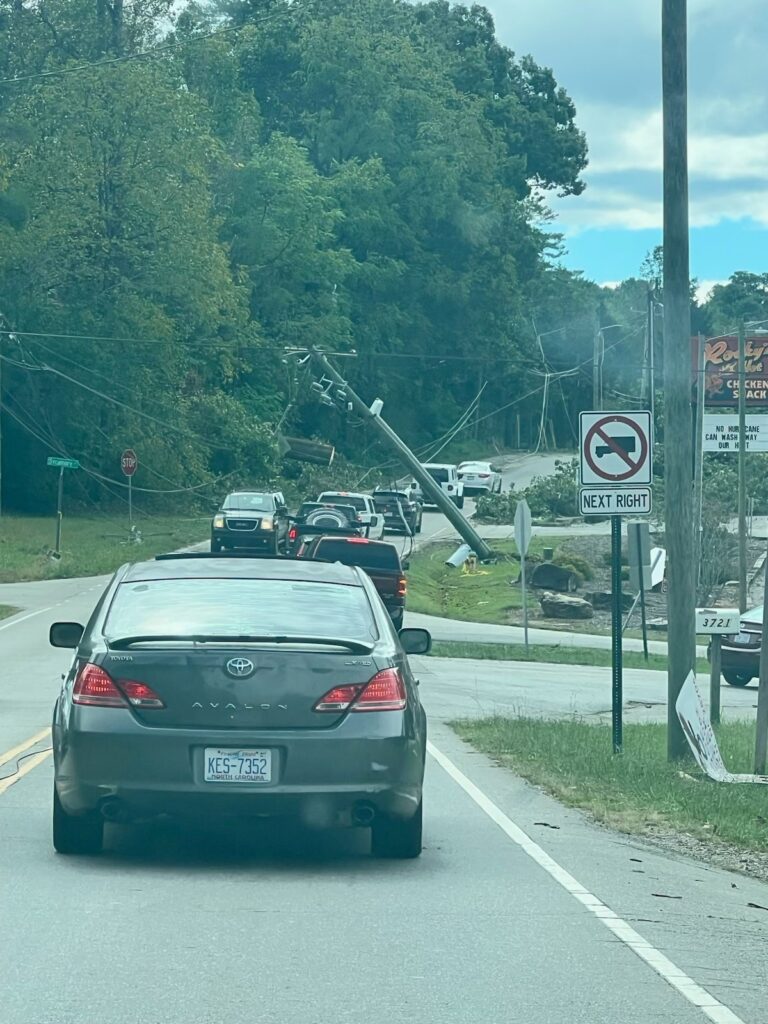
How & Where To Donate To Help Victims of Hurricane Helene
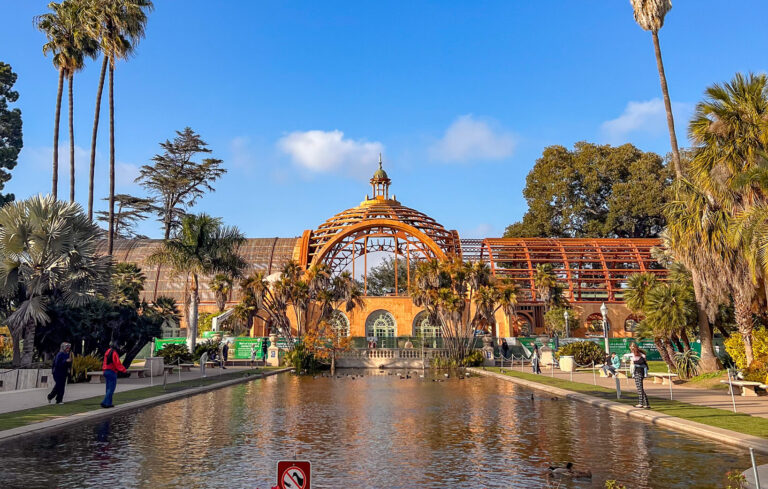
7 Best Must-Visit Photography Spots in San Diego

Vintage Camera Collecting: The Polaroid Land Camera Model 95
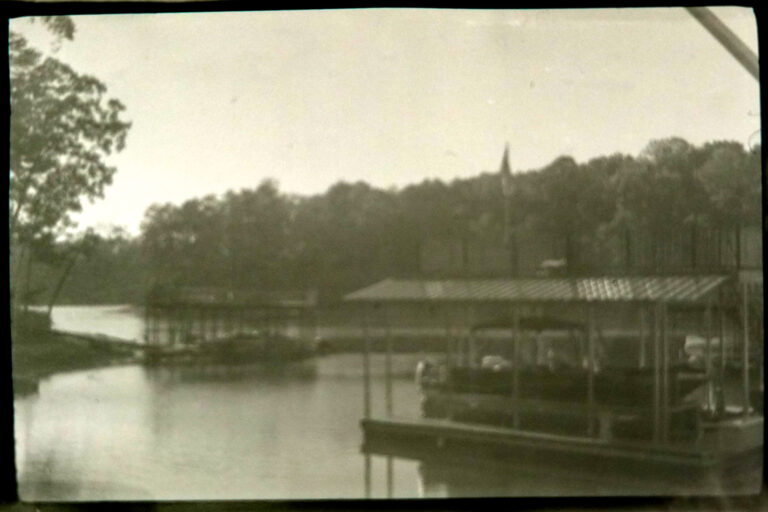
Vintage Camera Collecting: The 1916 Vest Pocket Kodak Autographic Camera History, Review & Sample Photos
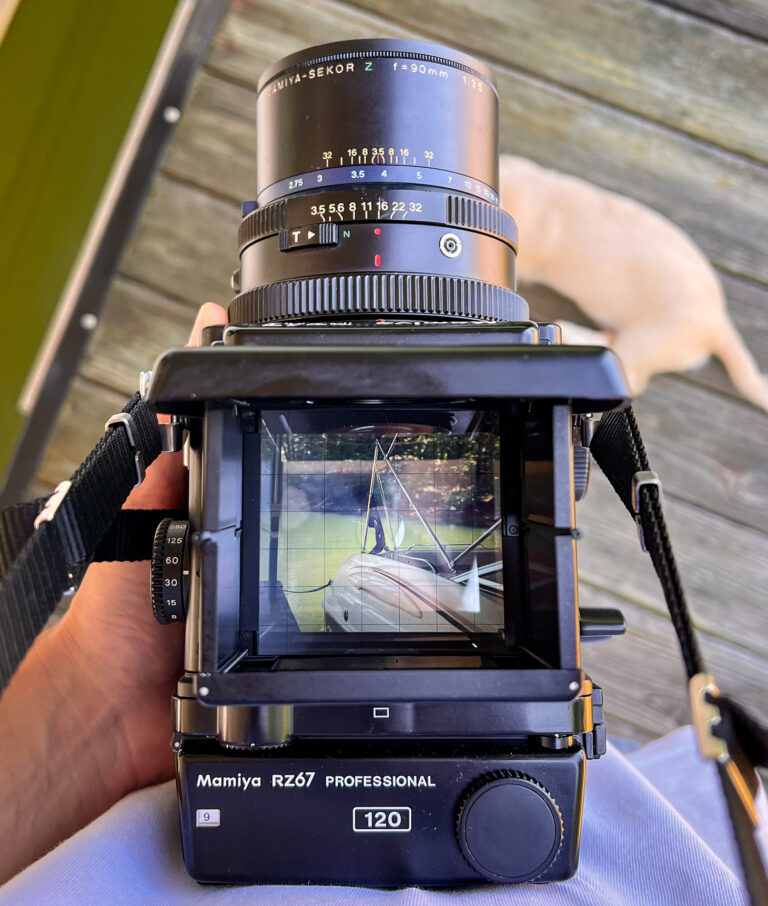
From Digital Ease to Manual Mastery: Tips & Tricks for Mamiya RZ67 Beginners
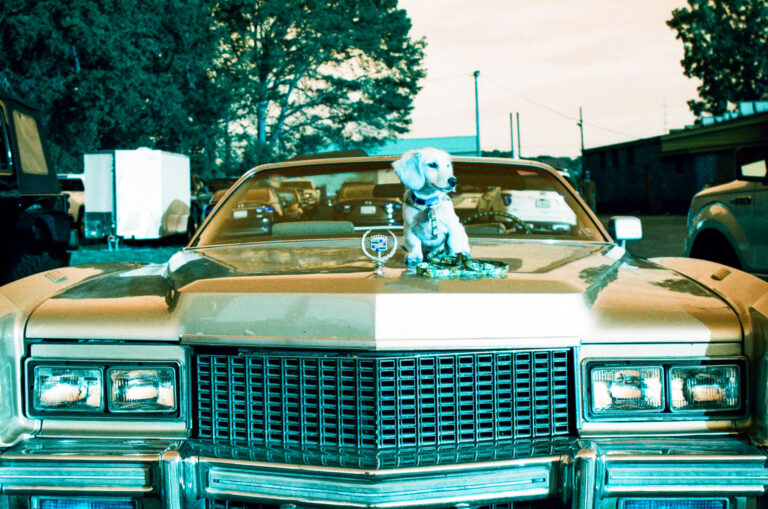
Diving into Dreamy Hues: My LomoChrome Turquoise 35mm Film Review & Sample Photos

Behind Lexi’s Lens: The Journey Begins
Argus Cosina 706 Super 8 Vintage Camera Review: Test Footage + First Impressions
Introduction: Why I’m Falling in Love with Super 8
You know that feeling when you stumble across something at just the right time? That’s exactly how I felt when I found the Argus Cosina Model 706 Super 8. It was a spontaneous consignment shop discovery in San Diego—unassuming, a little dusty, and totally irresistible. I didn’t have a Super 8 camera in my collection yet, and this one looked like a fun fixer-upper with some real potential.
After a quick repair to the battery compartment and a beachside test roll, it became clear: this camera is a total gem. Whether you’re a collector or curious about shooting film, I think this little piece of analog history has a lot to offer.
Argus/Cosina 706
How I Found My First Super 8 Camera
Side note: This battery compartment is what was “broken” when I bought the camera. Thankfully, all I had to do was clean and replace the internal parts held within the handle—everything else worked like a charm.
I found the Argus Cosina 706 at a consignment shop in San Diego—one of those fun, spontaneous finds you don’t plan for but can’t walk away from. It was marked at about $50, and even though I wasn’t able to open up and/or test it in-store, I noticed just a bit of corrosion near the battery handle. Still, the overall condition was great, and at that price? Worth the risk.
I’ve been wanting to learn more about camera repair, so this felt like a good challenge. When I got it home, I ordered some replacement parts online, swapped out the corroded bits in the battery compartment, and crossed my fingers. No internal issues, no electrical damage—just a straightforward fix. As I loaded the test roll, it started to come alive, and by the time I finished shooting, I was cautiously optimistic. When the footage came back looking great, I felt like I’d won the thrift shop lottery.
History: The Argus-Cosina Collaboration
The Argus Cosina Model 706 was produced between 1970 and 1972 and reflects a unique partnership between two brands: Argus, the well-known American camera maker, and Cosina, a Japanese manufacturer recognized for its optical precision and quietly prolific camera production. During this time, it was common for companies like Cosina to build cameras that were then sold under different brand names for Western markets—including Argus.
What makes the 706 particularly interesting is that it wasn’t just a rebrand—it was part of a small family of Super 8 cameras that Cosina produced with a consistent set of features aimed at amateur filmmakers. This model in particular offered a level of manual control and versatility that made it stand out from entry-level options of the time.
The 706 was designed for ease of use without sacrificing creative control. With support for multiple filming speeds (12, 18, and 24 fps), single-frame capabilities, and a TTL CdS metering system, it gave hobbyists room to explore more advanced techniques without needing professional gear. It’s one of those rare mid-tier cameras that still feels accessible to beginners while offering the precision that film nerds love.
More than 50 years later, it’s a great reminder of how well-engineered some of these cross-brand cameras were—and how much fun they still are to shoot with.
Sources: Cine-Super8, Internet Archive – Manual
Specifications & Features of the Argus Cosina Model 706 Super 8 Camera
Here’s a breakdown of what this camera offers under the hood:
- Lens: Cosinon f/1.8, 8–48mm zoom (6x zoom range) — sharp, bright, and super versatile.
- Zooming: Dual control — electric zoom and manual zoom options for flexibility
- Focusing: Manual focus with an aerial image system for precision focusing
- Exposure Control: TTL (through-the-lens) CdS metering; full auto exposure with optional manual override.
- Frame Rates: Shoots at 12, 18, and 24 fps + single-frame shooting for stop-motion or time-lapse work
- Viewfinder: Reflex SLR-style with adjustable eyepiece and exposure warning indicators.
- Power: Uses four AA batteries — easy to replace and travel-friendly
Distinctive Features
This camera may look unassuming, but it’s packed with a few thoughtful features that really make it shine:
- Dual Zoom Options: Use the motorized zoom for smooth motion, or go manual when you want full control
- TTL Metering: Exposure is measured directly through the lens — much more accurate than external sensors, especially with reversal film
- Manual Focus System: Aerial image in the viewfinder makes it easier to focus precisely, even if you’re new to film
Altogether, these small details add up to an experience that feels both intuitive and deeply analog in the best way.
Take a Closer Look:
A Quick Note on my Vintage Camera Hunting Grounds
Sample Footage from the Argus Cosina Model 706 Super 8 Camera
You can check out the footage from my test roll in the embedded YouTube video below! I’ve included both the raw scan and a slightly edited & trimmed version with boosted contrast—so you can get a feel for how it looks straight out of the lab, and how it can be gently tweaked in post. I’d love to hear your thoughts—especially if you have experience with Super 8. Any tips or constructive feedback on exposure, film choice, or technique are always welcome.
I shot this roll in early March 2025 using Kodak Vision3 50D/7203 Color Negative Film. The weather in San Diego was absolutely perfect that day—sunny, crisp, and just right for testing a vintage camera. I took the Argus Cosina 706 down to Ocean Beach and Mission Beach, running around with my dog Maui and just seeing what the camera could do.
The results? Pretty dreamy. The footage had that nostalgic, soft-edged Super 8 texture I’d hoped for. There were a few age marks around the edges of the film, but nothing distracting—in fact, they kind of add to the vibe. All I did in Premiere Pro was tweak the contrast to bring out the colors, and cut out a few undesirable frames for improved video flow. That said, I’ve decided to use this camera to help film my cousin’s wedding this June—it passed the test, and then some! The whole process gave me confidence that this camera is fully capable of handling meaningful projects, not just casual rolls.
Test Footage on my Youtube Channel
Final Thoughts
Now that I’ve had the chance to shoot with it, I can confidently say this camera is staying in my regular rotation. I’ve used older 8mm movie cameras before, like the Brownie Hawkeye 8mm Movie Camera, but this one is a major upgrade. It feels better built, easier to use, and the image quality speaks for itself.
I’m excited to experiment with it more—personal projects, client work, wedding footage, who knows? Long term, I’d love to offer Super 8 shooting as a professional protography service. The format is cinematic and nostalgic in a way that digital just can’t replicate.
Would I recommend the Argus Cosina 706 to other collectors or beginners? Absolutely. It’s easy to use, has enough manual control to learn the ropes, and the results are super satisfying. Just be prepared: the costs add up. The roll I tested cost around $40 just for one film pack, and development and scanning came out to about $100. I may eventually look into scanning at home to save on costs—but for now, I’m just excited to have this analog beauty in my creative toolkit.
If you’ve shot with this camera or have any favorite Super 8 tips, drop a comment below or contact me! —I’d love to hear from you!
San Diego People’s March 2025 Photos
Last weekend, I took the opportunity to attend the San Diego People’s March at Waterfront Park. This was a truly beautiful gathering of individuals from all walks of life, advocating for social justice, equality, and positive change, and it was a powerful reminder of strength found in unity and the importance of being heard.
I arrived early from the nearby farmers market, and I was inspired by the dedication of everyone in attendance! From the youngest & fluffiest fur babies, to well-seasoned advocates, everyone present gave off such a vibrant energy for change. And the signs they carried (bold, colorful, and thought-provoking!) spoke volumes about the important issues that are at stake. I exchanged smiles & sparked conversations (especially with my dog in tow), and overall, was just excited to gather face-to-face and share the energy of this powerful moment. It was a day of action, but also one of reflection and connection. My goal in documenting the San Diego People’s March was to capture not only the movement but also the emotions and humanity behind it.
Check out the full photo gallery below:
I am still working through the video footage, which takes longer to process but it’s coming soon! Most of my time that day was spent videoing, so I’m hopeful that I got some great shots!
Stay tuned for updates!
Guide to Ethical Photography & Photojournalism: Documenting With Empathy, Integrity, and Respect
Introduction
In an age where cameras are an essential tool for storytelling, it’s crucial for us, as photographers and photojournalists, to approach this art form with a sense of responsibility and care. Ethical photography isn’t just about capturing the moment in front of us—it’s about embracing our role as storytellers to document the world with empathy, respect, and integrity. When crises unfold or deeply personal stories come into focus, photographers have the power to make an impact that resonates far beyond the frame.
Nowadays, it may feel like we’re constantly living through “unprecedented times.” With devastating events like the LA fires, Lahaina (Maui) Fires, Hurricane Helene, and many more, the weight of documenting these moments feels heavier than ever. If you’re like me, you may feel a deep calling to capture what’s happening around you, especially when these events strike close to home. This desire to document is powerful—it’s a way to process, to remember, and to share. But it also comes with a responsibility to act with thoughtfulness and compassion.
As photographers, we must consider how our images might impact those affected and the broader story they tell to the world. As Ohio University’s Ethical Photography guide reminds us, every image we create has the potential to shape perspectives and spark conversations. This guide explores how we, as photographers, can honor humanity while creating meaningful and respectful work.
What Is Ethical Photography?
Ethical photography begins with putting people first. It’s about honoring the dignity and autonomy of your subjects while remaining faithful to the story you’re documenting. PhotoEthics.org describes it as finding the balance between documenting reality and protecting the people involved. It’s a responsibility that goes beyond technical skill—it’s about how we connect with others through our lens, recognizing that we have the power to shape how they are seen and remembered.
The Role of Empathy in Photography
Empathy is the heartbeat of ethical photography. It’s about stepping into your subject’s world with genuine care and curiosity, ensuring that what you’re capturing respects their humanity. Do Street Photography’s blog on ethics explains that empathy ensures your work respects, rather than exploits, the people you photograph. Whether you’re capturing fleeting candid moments or documenting life-changing events, empathy allows us to tell stories that honor the people in them.
Principles of Ethical Photography
- Respect for Consent
When photographing people, always prioritize consent. If someone is uncomfortable or unwilling to be photographed, respect that boundary. Transparency about your intentions and how your images will be used builds trust and ensures you’re working ethically. - Context Awareness
Every photograph exists within a broader cultural, social, or environmental context. What might seem acceptable in one situation could be harmful or misinterpreted in another. Ethical photographers remain mindful of these nuances, striving to create work that uplifts rather than alienates.
- Avoiding Exploitation
Photographs should educate, inspire, and inform without exploiting or dehumanizing the people they depict. Ethical photography means telling stories in ways that preserve the dignity of everyone involved.
- Respect for Consent
When to Put the Camera Down: Balancing Documentation With Respect
Sometimes, the most ethical choice is to step back. In-the-moment decisions define ethical photography—whether it’s choosing not to photograph someone in a vulnerable state, stepping aside to let first responders do their work without interference, or having the discretion to NOT share a particular photo after it was captured. Respecting the moment and the people in it often means that sometimes, we may need to remind ourselves to be present and put the camera down.
For example, during a crisis, the priority should be to avoid causing harm while focusing on highlighting resilience and recovery. It’s a good habit to develop, to ask yourself:
- Am I helping or harming by capturing this moment?
- What would the subject feel if they saw this image later?
Mindful Storytelling After Taking The Shot
Photos capture moments, but storytelling defines how those moments are understood. How you share your work—through captions, blog posts, social media, or selling images—shapes its impact. Captions should be truthful and respectful, adding meaningful context without sensationalizing. Blog posts and other written content should amplify the story while honoring the dignity of those involved.
Where you share your images also matters. Social media and media outlets can quickly spread your work, but they also come with the responsibility to protect the privacy and humanity of your subjects. Ethical storytelling means making intentional choices that ensure your work uplifts and informs while respecting the people it portrays.
Ethical Practices in Specific Scenarios
- Crisis Photography
When documenting crises, such as natural disasters or emergencies, ethical considerations are vital. Respect the privacy of victims and ensure your presence doesn’t hinder the efforts of first responders. Focus on images that raise awareness and support recovery efforts without sensationalizing suffering.
- Street Photography
Street photography captures unfiltered moments of everyday life. While spontaneity is its charm, it’s important to balance it with respect for privacy and dignity. Ethical street photographers consider how their images might affect the individuals they capture.
- Travel Photography
Travel photographers often navigate cultural nuances. Take the time to learn about local customs and traditions. Seek permission when photographing people, and avoid perpetuating stereotypes or exploiting communities for aesthetic appeal.
A Note on Disaster Tourism
This may be stating the obvious at this point, but we, as photographers, should be human first, and photographers second. When disasters strike, affected areas face immense challenges as they heal and rebuild. Visiting too soon or focusing solely on dramatic visuals risks exploiting those who are suffering and can disrupt recovery efforts. Recognize that the people in these areas are navigating unimaginable hardships, and they may or may not be ready for attention / tourism yet. As photographers, it’s natural to want to document these moments. However, before you visit an area, make sure to do your research and approach with care, sensitivity, and understanding.
Practical Tips for Ethical Photography
- Use a telephoto lens to maintain distance in sensitive situations.
- Blend into your surroundings to avoid drawing unnecessary attention to yourself.
- Reflect on your intentions and the potential impact of your images in real time, ensuring your actions align with your standards even as the scene unfolds.
- Get feedback from peers or mentors to ensure your work aligns with ethical standards.
Even the simplest photograph can influence perceptions—so always shoot with purpose and integrity.
Leveraging Photography for Positive Change
Photography has the potential to inspire action, drive awareness, and create meaningful change. Consider how your work can actively contribute to positive change:
- Raise Awareness: Use your images to bring attention to underreported issues, such as environmental crises or social justice movements, ensuring your work adds value to the conversation.
- Support Advocacy: Collaborate with nonprofits, charities, or grassroots organizations to create campaigns that drive real-world impact.
- Foster Connection: Show the humanity behind the headlines, encouraging viewers to see the people and stories often overlooked.
- Educate and Inspire: Create visuals that challenge stereotypes and broaden perspectives, helping to break down barriers and promote understanding.
Our role as photographers goes beyond technical skill or “having a great eye”. It’s about using our lens to tell stories that inspire, connect, and uplift.
Conclusion
Photography is a powerful tool, capable of shaping how the world sees and understands critical moments. To make a lasting impact, it’s essential to approach every step—from capturing the image to sharing it—with intentionality and care. When we make thoughtful choices about how we frame, present, and use our work, we ensure that our photography becomes a force for positive change. Togehter, we can create a more compassionate and understanding world—one image at a time!
How & Where To Donate To Help Victims of Hurricane Helene
Hello Everyone, Lexi here.
I normally focus on photography & travel content, but in light of the devastating effects of Hurricane Helene in Western North Carolina & surrounding areas, I wanted to use this platform to share information about how outsiders may help. Although I am not currently in the area, I am from North Georgia and I have friends and family who live in the Asheville area. I have been in contact with them and they are sheltering in place. From what they’ve shared and from sources online, relief efforts are underway but there are some areas lacking essential resources like food, water and power.
From what others have shared, linemen and disaster relief workers are working tirelessly to restore utilities like water & power, but it may take weeks until utilities are restored for several areas. Resources like food, gas, drinking water, clothing, etc are needed.
I hope this post can provide resources to those outside of the area and are looking to help. If you CAN help, PLEASE help! I’ll do my best to keep this updated & accurate, but if you need the latest information & official statements, please look toward local sources.
If you’ve been affected by the hurricane and are reading this, I hope you are staying safe and doing okay. Help is on their way! If you are experiencing an emergency, most news sources are saying 911 is still the best resource to call for help to let someone know you need attention.
If you have any updates or requested edits for anything discussed here, please leave a comment on this blog post below or reach out to me. I will be updating as needed.
Source: B. Wilson of Brevard, NC
Travel Advisory: Do Not Travel to affected areas
Officials are urging the public to avoid traveling to Western North Carolina & affected areas. Governor Roy Cooper stated, “Please stay off Western North Carolina roads so that emergency responders, utility crews, and desperately needed supplies can get through. We don’t need people visiting Western North Carolina viewing the damage.”
How You Can Help
Staying Informed
For ongoing updates, please monitor these sources:
- CNN Live Updates: Live Updates
- North Carolina Weather Authority: Live Updates on Facebook
- NC Department of Public Safety: Offers updates on cleanup efforts, road closures, and more. Visit their site.
- The Weather Channel: Weather Forecast
- Social Media: I’ve found that social media, especially TikTok, has been a quick & direct way to get information. Social Media live streams are also an excellent way to connect with people & get firsthand reports.
A person by the handle of “mindfulgeeks” has make a linktree with an excellent list of relief resources. I don’t know this person, but this is a very thorough list for both affected locals & outsiders looking to help, so I’m going to link it here: https://linktr.ee/mindfulgeek
Supplies Donations & drop off points by Area:
I hope this page finds the right people. This list is not exhaustive, there are several people, businesses & organizations arranging relief efforts in various areas. Some of these drop off points may be time sensitive, and I have also done my best to arrange these by location but there may be some errors. If you have anything to add, please leave a comment with information and I will do my best to update.
Monetary Donations:
- UNITED WAY – United Way, a social services organization, is accepting donations as they mobilize resources to help those affected. You can give here.
- AMERICAN RED CROSS – The Red Cross is fully activated to assist with the aftermath of Hurricane Helene. You can help with the hurricane relief efforts by donating to the Red Cross. Donations enable the Red Cross to respond to and help people recover from disastrous storms. You can donate here.
- SECOND HARVEST FOOD BANK – Second Harvest Food Bank is working to support those affected by Helene. The food bank is hosting a virtual food and fund drive and it’s live on their website. To donate, click here.
- NC Disaster Relief Fund: The Governor’s Disaster Relief Fund is taking donations to help communities in need. Donate here.
- East Tennessee Foundation is an official source to make monetary donations to impacted counties. Visit easttennesseefoundation.org.
- Local chapters of the national coalition Voluntary Organizations Active In Disaster are asking for only cash donations for recovery efforts in Florida, Georgia, North Carolina, and South Carolina.
- The Florida Disaster Fund supports response and recovery activities in the state.
- Feeding America is collecting funds to provide meals and supplies to impacted areas.
- GoFundMe is organizing its own fundraiser for disaster relief efforts.
North Carolina:
Davidson County:
- United Way of Davidson County (source: NC 211)
- Richard Childress Racing: 425 Industrial Drive, Welcome, NC. (source: NC 211)
- Davidson County Sheriff’s Department: 2511 E US Hwy 64, Lexington, NC 27292. (source: NC 211)
Buncombe County:
- Operation Airdrop: 5825 Thunder Rd NW, Concord, NC 28027 (Open 8:00 AM to 7:00 PM). Volunteers are needed for unloading, sorting, and organizing supplies. Volunteer Sign-Up Form for Operation Airdrop. See here for a Supplies List. (source: NC 211)
Carteret County:
- Broad and Gales Creek Fire Department: Crews along with other local Fire-EMS stations across Carteret County are hosting a supply drive to support western North Carolina’s recovery efforts due to Helene. Essential supplies can be dropped off at Broad and Gales Creek Fire Department, 3010 Hwy 24, in Newport, through October 3, between 7 a.m. and 5 p.m. (source: ABC12)
Craven County:
- The City of New Bern is collecting relief supplies for victims of Tropical Storm Helene in the western part of our state. Beginning Tuesday, October 1st, non-perishable goods and cleaning supplies will be collected at five sites listed below. All facilities are open Monday through Friday from 8am-5pm unless otherwise noted. (source: ABC12)
- City Hall, 300 Pollock Street
- West New Bern Recreation Center, 1225 Pine Tree Drive
- Pleasant Hill Community Center, 424 NC 55 Hwy – donations accepted Monday through Friday from 4pm-6pm
- New Bern Farmer’s Market, 421 S. Front Street – donations accepted Tuesdays, Wednesdays, and Thursdays from 8am-5pm
- National Night Out, Union Point Park, 210 E. Front Street – supplies will be collected from 5pm-8pm during the National Night Out event.
Pitt County:
- Our deputies leave for the Asheville area early Tuesday. They are taking a load of donated supplies; water, personal hygiene items, non-perishable food, etc. to help those in need. Our office at 100 New Hope Rd is taking donations to be distributed. We are unable to accept used clothing at this time, but new clothing is acceptable. (source: ABC12)
Pamlico County:
- Pamlico County Sheriff’s Office: The Pamlico County Sheriff’s Office will be teaming up with several other organizations in Pamlico County to be a drop-off point for supplies, for those in Western NC that need help. (source: ABC12)
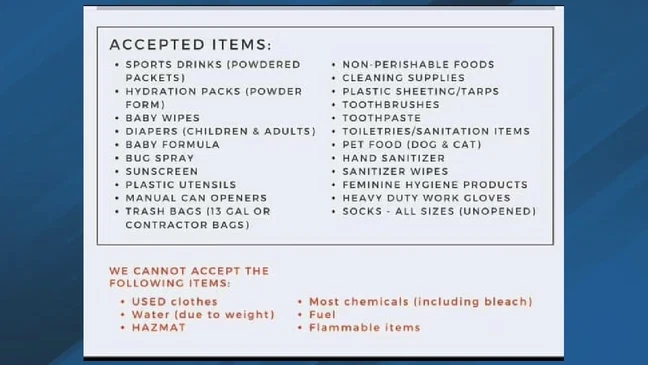
Onslow County:
- Onslow County Sheriff’s Office: The sheriff’s office is collecting supplies to aid victims impacted by Helene. Collections began Oct. 1 and will run until Oct. 9.
Lt. Schmitz will be in the Sheriff’s Office parking lot with a truck and trailer on the following days:
October 1st from 3pm to 6pm
October 3rd from 12pm to 7pm
October 6th from 1pm to 5pm
(source: ABC12)
Forsyth County:
- Winston-Salem/Forsyth County Schools stepped up to provide aid to school districts in western North Carolina. Four WS/FCS staff members volunteered to deploy, bringing heavy equipment and machinery, loaded up by the district’s facilities department, to support Buncombe County Schools. WS/FCS Superintendent Tricia McManus and Watauga County Superintendent Leslie Alexander, who previously worked for WS/FCS, put together a plan to collect donations of water on Oct. 1 in a special event they’re calling “Water for Watauga.” They’ll be collecting cases of bottled water, and anyone can donate at 475 Corporate Square Drive between 7:30 a.m. to 7 p.m. “Watauga and Buncombe County and other schools throughout the region face a long recovery,” McManus said in a statement. “Let’s show them they are not alone. Thanks for your kindness and support!” Help is also coming from Forsyth County first responders and community groups. The Forsyth County Sheriff’s Office, Winston-Salem Police Department, Winston-Salem Fire Department, Winston-Salem Forsyth County Branch of the NAACP and other local faith and political leaders teamed up to collect donations. They’ll be accepting donations from noon to 7 p.m. each day until Wednesday outside of the Forsyth County Public Safety Center, located at 301 North Church Street. The organizations are specifically asking for non-perishable foods, bottled water, diapers, formula, baby wipes, hygiene products, first-aid kits and packaged socks. (source: Fox News)
Greensboro:
- The YMCA of Greensboro and multiple Greensboro-area groups are working together to gather items for people in need in western North Carolina. Donations can be dropped off at YMCA of Greensboro branch locations and Camp Weaver. They’ll be accepting donation “until further notice to support our community during this challenging time.” The City of Greensboro added that collection bins will be at the GuilfordWorks career centers in Greensboro and High Point for the YMCA of Greensboro to collect. The city says donated items can be dropped off at the following GuilfordWorks career center locations:
- 301 S. Greene St., Suite 200, Greensboro, NC 27401
- 2301 W. Meadowview Rd., Greensboro, NC 27407
- 607 Idol St., High Point, NC 27262
To help those most affected, the YMCA of Greensboro is collaborating with New Garden Landscaping, Buds and Blooms Nursery, and Gossett’s Nursery. Donations will be taken to South Valley Gardens in Newland, N.C., for distribution. (source: Fox News)

Rockingham County:
- Rockingham County Sheriff’s Office:
The Rockingham County Sheriff’s Office and Floyd Missionary Baptist Church of Stoneville will be collecting supplies over the next two weeks. The sheriff’s office says donations can be dropped off at the lobby of the Rockingham County Sheriff’s Office, located at 130 Justice Center Drive in Reidsville, any hour any day through Oct. 13. They will accept donations of bottled water, flashlights, batteries and non-perishable food items. Floyd Missionary Baptist Church will be delivering the items to western North Carolina (source: Fox News)
Beaufort County:
- Residents wanting to donate food and supplies to aid storm recovery victims in Western North Carolina can do so at the following locations:
- Beaufort County Sheriff’s Office rear entrance (M-F) any time.
- Washington Walmart Super Center (M-F) 10am – 2pm
- Sidney Volunteer Fire Department today until 10pm or tomorrow 10/1 from 7am 10pm. Call SVFD Captain Harper at 252-944-3162 to arrange drop off after 10/1.
- Beaufort County Sheriff’s Office Aurora Substation Wednesday 10am – 2pm
(source: ABC12)
Martin County:
- A donation drive for Western NC is underway to help provide aid to those impacted by Helene. Donations are being accepted at the Martin Community College Library located at 1161 Kehukee Park Road in Williamston. Donations will be accepted from October 1st to 9th. The cut-off time is 12:00 noon. The following items are needed:
- Water
- Gatorade
- Non-perishable foods
- Hygiene products
- Baby products
(source: ABC12)
South Carolina:
Charleston County:
- The CODfather, Proper Fish & Chips: The restaurant in North Charleston’s Park Circle area has been collecting items and taking trips to places in western North Carolina impacted by the storm and devastating flooding. You can drop relief items off at 4254 Spruill Ave. during regular business hours. (source: News 2)
- Fred Anderson Toyota Charleston:
The Toyota dealership at 2100 Savannah Highway has been set up as a donation center. It will take water and non-perishable items for those in need and deliver them to western North Carolina communities. (source: News 2)
- Pet Helpers: In response to the needs following Helen’s destruction, Pet Helpers has organized two supply drives. One is at Pet Helpers on 1447 Folly Road, and the second is at Animal Helpers Retail on 1376 Savannah Highway. Local businesses have teamed up with the organization to accept essential supplies for cats and dogs, including collars, leashes, harnesses, canned food, dry food, cat litter, and more. Supplies will be taken to Aiken County. (source: News 2)
Folly Beach:
- Folly Beach is collecting much-needed items for storm victims. Donations can be dropped off at 21 Center Street in the lobby of the police department, fire department bays, or city hall during business hours. A donation deadline is October 2 by 3 p.m., as items will be collected and taken to areas in need. The city asks people to stick to the approved list to ensure all items can be accepted. They are unable to accept used clothes, water (due to weight), most chemicals (including bleach), fuel, and flammable items. (source: News 2)
Georgetown County:
- Georgetown County Fire and EMS: Georgetown County Fire and EMS is accepting non-perishable donations at Station 4 located at 11309 Pleasant Hill Road in Hemingway. Accepted items include food, water, flashlights, hygiene products, diapers, wipes, baby food, and infant formula. (source: News 2)
- Georgetown First Assembly: Those in Georgetown can drop off supplies at Georgetown First Assembly on Monday, Tuesday and Wednesday from9 a.m. to 2 p.m. The supplies will be flown to the Asheville-area daily by a local pilot. Those who want to support with a monetary donation can do so here to help purchase fuel for the planes carrying supplies. (source: ABC News)
Harbor Lake Baptist Church
- Harbor Lake at 1056 Red Bank Road in Goose Creek is now gathering donations for a second wave of trucks that will leave later this week. People can drop off water, Gatorade, non-perishable food items, cat and dog items, toiletries, and other comfort items. (source: News 2)
Isle Of Palms:
- Isle of Palms police are accepting donations, which can be dropped off at the first floor of the Public Safety Building, located at 30 JC Long Blvd, anytime between now and Wednesday. Used clothing, water, HAZMAT, most chemicals, fuel, and flammable materials will not be accepted. Water and liquids cannot be accepted due to helicopter weight limits. (source: News 2)
Murrells Inlet businesses
- Murrells Inlet Fishing Charters, Perry’s Bait and Tackle Shop, and Murrells Inlet Outpost are accepting donations of nonperishable food, baby formula and supplies, batteries, flashlights, animal food, personal hygiene items, and water to help flooding victims. Drop off items at any of the three shops off Highway 17 Business and they will go directly to families affected. (source: News 2)
Myrtle Beach:
- Black’s Tire and Auto Service All Black’s Tire & Auto Service locations will be collecting items and donations for Helene victims. Items will be accepted at BTS until further notice. There are multiple BTS locations in Myrtle Beach and surrounding areas. (source: ABC News)
- Innovative Real Estate All Myrtle Beach-area offices will be collecting items needed for families throughout Western North Carolina on Monday and Tuesday. The items will be taken to the area on Wednesday by a local relief organization. (source: ABC News)
- Kosta Bowls All Kosta Bowls locations will be collecting donations for Western North Carolina. For more information click here. (source: ABC News)
- Southern House of Pancakes: Southern House of Pancakes is partnering with Spokes of Hope and Salt Life Church to bring aid to the hurricane victims. Donations can be dropped off at the Southern House of Pancakes 7 a.m. until 2 p.m. with pickup on Wednesday. The Famous Toastary in Carolina Forest and Beach Church are all acting as drop-off locations for supplies, which will be flown or driven into cities in need. (source: ABC News)
- Crooked Hammock Brewery: Crooked Hammock Brewery in North Myrtle Beach will collect donations until Tuesday at 4 p.m. to be transported back to North Carolina. (source: ABC News)
York County:
- Operation Airdrop (Concord, SC): Drop-off point for supplies to be airlifted to North Carolina. (source: NC 211). Operation Air-Drop is currently registering and dispatching volunteer pilots with their own planes out of Concord Padgett Regional Airport. Donations of relief supplies are being accepted in the Walmart Parking lot near Concord Mills. For those interested in flying or volunteering, find complete information about Operation Airdrop. (source: QC News)
Tennessee:
Statewide:
- East Tennessee State University is collecting items to build flood buckets and hygiene kits. They are also conducting a blood drive on Sept. 30 and Oct. 1. Details on how to donate can be found at www.etsu.edu. (source: WKRN News)
- Second Harvest Food Bank of Northeast Tennessee asked for donations to be made so they can continue to distribute food and water where it is needed most. Donate by calling 423-279-0430 or online. (source: WKRN News)
- The Salvation Army of Kentucky and Tennessee has already begun providing critical help to the flood-impacted areas, and now request donations as they continue their efforts. Donations can be made at helpsalvationarmy.org or by phone at 1-800-SAL-ARMY. (source: WKRN News)
- Tennessee Colleges of Applied Technology is collecting bottled water for flood victims at all of its locations this week. Individuals involved with TCAT’s truck driving program will be delivering the items to East Tennessee. You can find a full list of TCAT locations at www.tbr.edu. (source: WKRN News)
- United Way of East Tennessee Highlands serves a multiple impacted counties. You can donate to their disaster relief fund at unitedwayetnh.org. To help additional United Way locations, click here. (source: WKRN News)
Clay County:
- Clay County Emergency Management Agency is collecting flashlights, batteries, hygiene items, cleaning supplies and more. Donations can be brought to 143 Cordell Hull Dr. in Celina. For more information, click here. (source: WKRN News)
Franklin County:
- Franklin County Sheriff’s Office plans to fill a tractor trailer with donations for flood victims. It will be parked at Franklin County Annex until it is full. The address is 851 Dinah Shore Blvd. in Winchester. (source: WKRN News)
Hickman County:
- Helping Hands of Hickman County is accepting bottled water donations until Oct. 5 at 10515 Ligon Love Rd. in Bon Aqua. (source: WKRN News)
Lincoln County
- is collecting supply donations for East Tennessee at four locations until Wednesday afternoon. They will accept bottled water, large trash bags, baby products, toiletries, cleaning supplies and non-perishable foods. Click here for more details.
- Lincoln County High School, 1233 Huntsville Hwy., Fayetteville, Tenn.
- Pleasant Hill Baptist Church, 353 Stewarts Chapel Rd., Flintville, Tenn.
- First United Methodist Church, 200 Elk Ave. N., Fayetteville, Tenn.
- Park City Baptist Church, 2809 Huntsville Way, Fayetteville, Tenn.
- Fayetteville Public Utilities will also accept donations until Wednesday, Oct. 2 at noon. Drop-offs can be made at 408 College St. W. in Fayetteville. For more information, click here (source: WKRN News)
Perry County
- Perry County Sheriff’s Office is collecting bottled water, gas cans, baby formula and plastic totes. Drop-offs will be accepted at the Perry County Sheriff’s Office, Perry County Chamber of Commerce and the City of Lobelville Public Works Building. For more information and times click here. (source: WKRN News)
Putnam County
- Cookeville High School will accept donations from 9:30 a.m. to 1:30 p.m. on Oct. 1 and 2. Donations of trash bags, non-perishable foods, cleaning supplies and more will be brought to the flood victims in Cocke County. Click here for more details. (source: WKRN News)
Sumner County
- Beech High School in Hendersonville is collecting bottles and jugs of water, travel-sized toiletries and more. Donations can be dropped off in the main lobby of the school until Oct. 4.
- Exit Reality Garden Gate Team in Portland will accept water and non-perishable food items until Oct. 2 at 5 p.m. Items can be dropped off at 109 Main St. Call 615-405-8830 for details.
- Halltown Church will be collecting toiletries, water, canned goods and more starting on Oct. 1. Donations can be dropped off in the parking lot of Halltown Church at 120 Dink Rut Rd. in Portland. The items will be taken to victims in North Carolina and Tennessee on Oct. 11. For more information click here.
- Sumner Co. has three additional locations to bring donations that have been organized by local residents. They are in need of baby essentials, cleaning supplies and more. More info here.
- Shannon Insurance Agency, 805 S. Broadway, Portland, Tenn.
- Donations are accepted until Oct. 3 at 4 p.m.
- Oak Grove General Store, 110 Fairfield Rd. Bethpage, Tenn.
- Oct. 1 and Oct. 3
- 5 to 7 p.m.
- Portland Nazarene Church, 409 S. Russell St., Portland, Tenn.
- Oct. 2 from 4-7 p.m.
- Oct. 5 from 9 a.m. to noon
(source: WKRN News)
Warren County
- McMinnville Fire Department will hold a donation drive until Oct. 4. The fire department accepts bottled water, food items, personal hygiene items and more. Items can be dropped off at McMinnville City Fire Department Stations 1 or 2, or at Woodmont Baptist Church. Click here for more details. (source: WKRN News)
Wayne County
- Collinwood High School is accepting donations of bottled water and paper products. Drop offs can be made in the school’s office at 401 N. Trojan Blvd. in Collinwood. (source: WKRN News)
Wilson County
- MJ 4 Hope out of Mt. Juliet has started to collect donations for people affected by Hurricane Helene. Click here to donate to their East Tennessee disaster relief fund. (source: WKRN News)
- True Rescue volunteers are in North Carolina assisting with animal rescues. To help care for the animals being rescued from flooded shelters and people in the area, the shelter is accepting financial donations, pet food and supplies. Donations can be dropped off at True Rescue Shelter at 12110 Lebanon Rd. in Mt. Juliet. (source: WKRN News)
- The Lebanon Fire Department is hosting a donation at their headquarters, located at 520 Coles Ferry Pike. Fire officials said they will receive donations from 9 a.m. to 6 p.m. until further notice. For information about donations, click here. (source: WKRN News)
Other areas:
If you live in an area that’s not near a location listed above, the Voluntary Organizations Active In Disaster has a vetted list of disaster nonprofits that are accepting donations. That being said, many other organizations and communities have come together to assist with relief so there may be other opportunities in your area to help.
Other kinds of donations
I encourage you to talk to your local donation sites about their capabilities for sending relief.
Additional Resources
- FEMA Assistance: Homeowners and renters in 25 counties may be eligible for disaster assistance for damage caused by Hurricane Helene. Apply through the FEMA App or by calling 800-621-3362. More information can be found on FEMA’s website.
- NC Department of Public Safety: Offers updates on cleanup efforts, road closures, and more. Visit their site.
- Crisis Cleanup Hotline: Homeowners needing debris cleanup can call 844-965-1386 for free assistance.
Help Where You Can
Every donation can make a significant difference in the Southeast’s recovery. Donations, volunteers, and relief aid will be needed for weeks & months to come, so be patient and continue to check in with your loved ones & local news reports. Check back as I update this page with more resources and information as it becomes available.
Love and care to everyone affected by Hurricane Helene,
Lexi
7 Best Must-Visit Photography Spots in San Diego
San Diego, with its endless sunshine, beautiful landscapes, and vibrant urban scenes, is a haven for photographers. Whether you’re a local with a camera in hand or a visitor aiming to capture the essence of this city, San Diego’s diverse locales offer something for every type of photographer. From the serene shores of La Jolla Cove to the historic streets of Old Town, here are seven must-visit photography locations in San Diego that promise stunning shots!
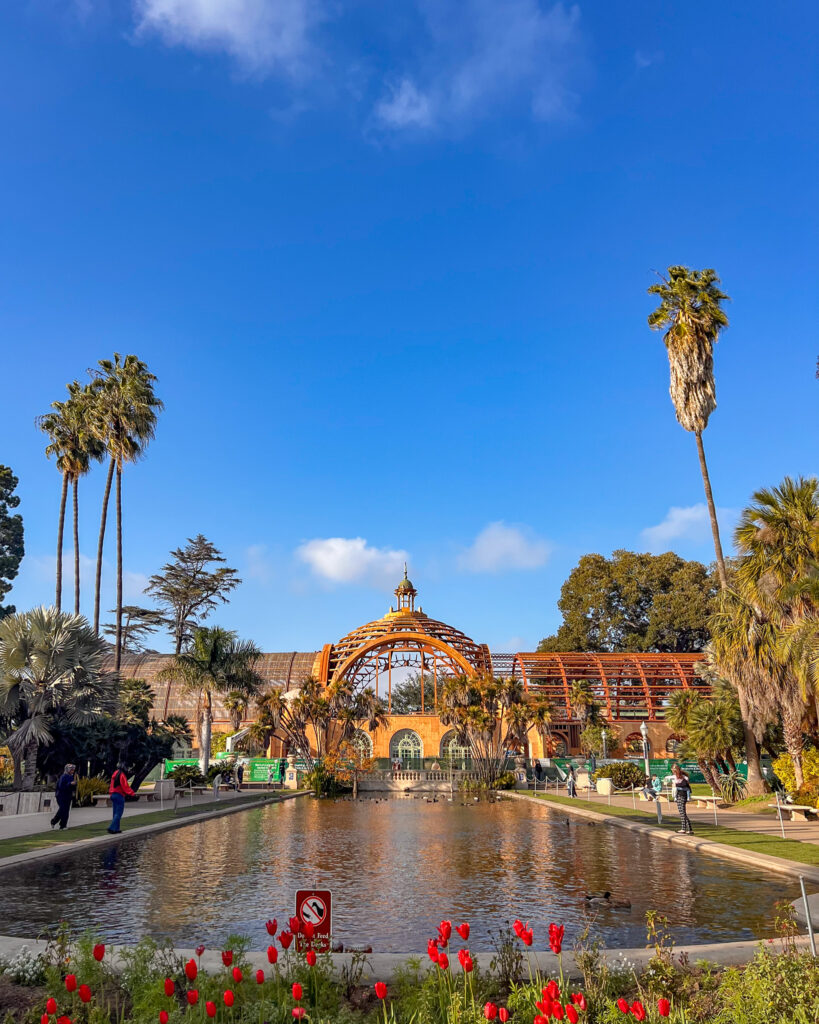
Balboa Park
Balboa Park is more than just a park; it’s an eclectic showcase of gardens, architecture, and culture. Each corner tells a different story, whether it’s the majestic organ pavilion or the tranquil Japanese Friendship Garden. Pro Tip: To truly capture the architectural elegance, visit during the golden hour when the soft light adds a magical glow to the structures. Try incorporating human elements to add scale and life to your shots. Visit Balboa Park’s website here.
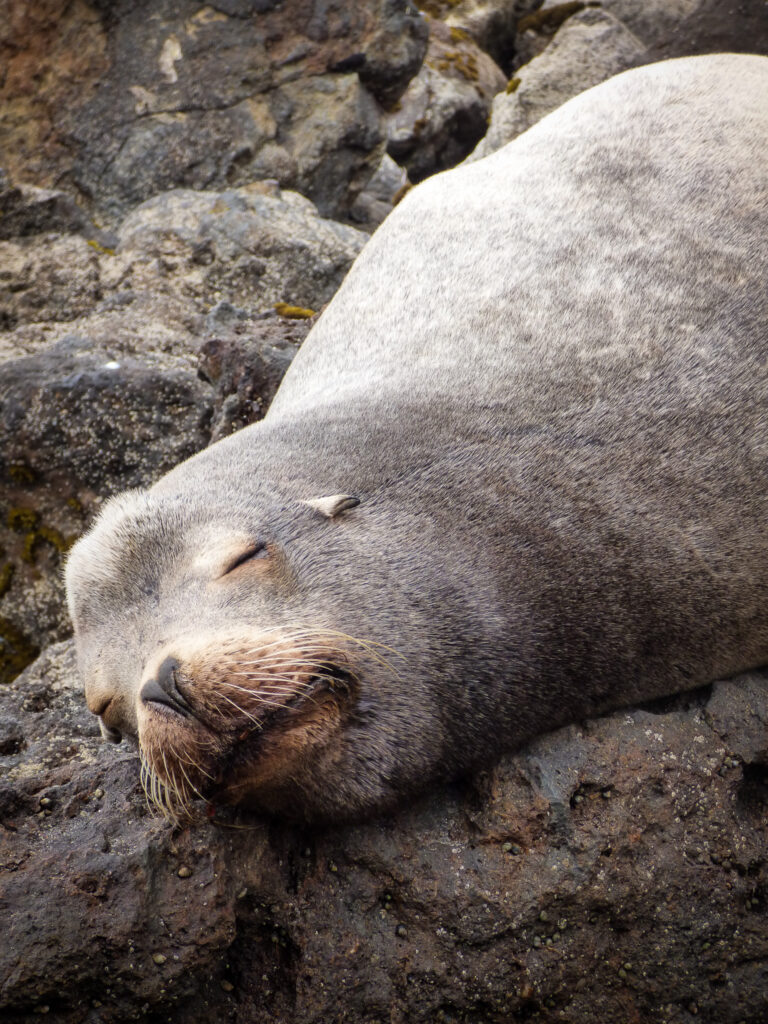
La Jolla Cove
The rugged cliffs and crystal-clear waters of La Jolla Cove offer a stunning backdrop for both landscape and wildlife photography. The area is a sanctuary for seals, sea lions, and myriad sea birds. Pro Tip: Early morning light provides the best conditions for wildlife photography, reducing glare and capturing the rich textures of the sea and cliffs. A telephoto lens is a must for intimate wildlife shots. Be Aware: Some areas of La Jolla have been closed to the public to preserve wildlife. Be aware of these closures when planning your visit to this area. See the New York Times article here.
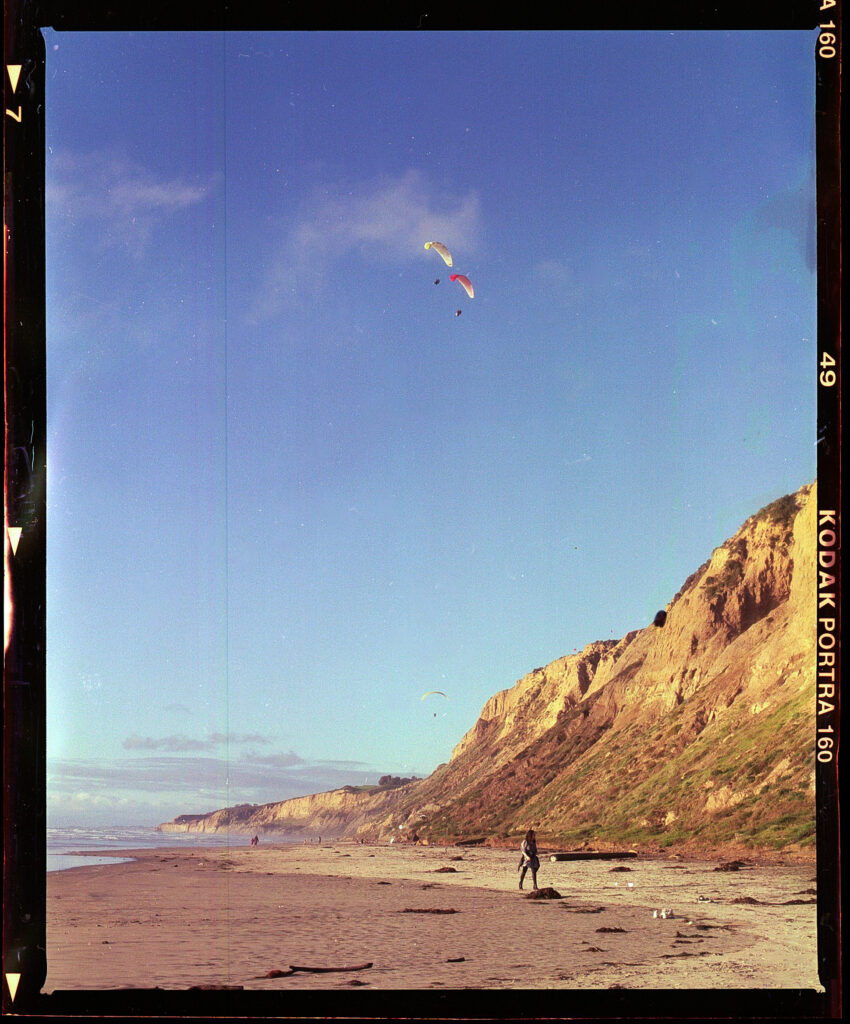
Torrey Pines Gliderport
Capture the thrill of flight at the Torrey Pines Gliderport, where the sky is dotted with colorful gliders against the backdrop of the expansive ocean. Pro Tip: Use a fast shutter speed to freeze the action of the gliders. Late afternoon light can add drama to your shots, creating long shadows and highlighting the contours of the cliffs.
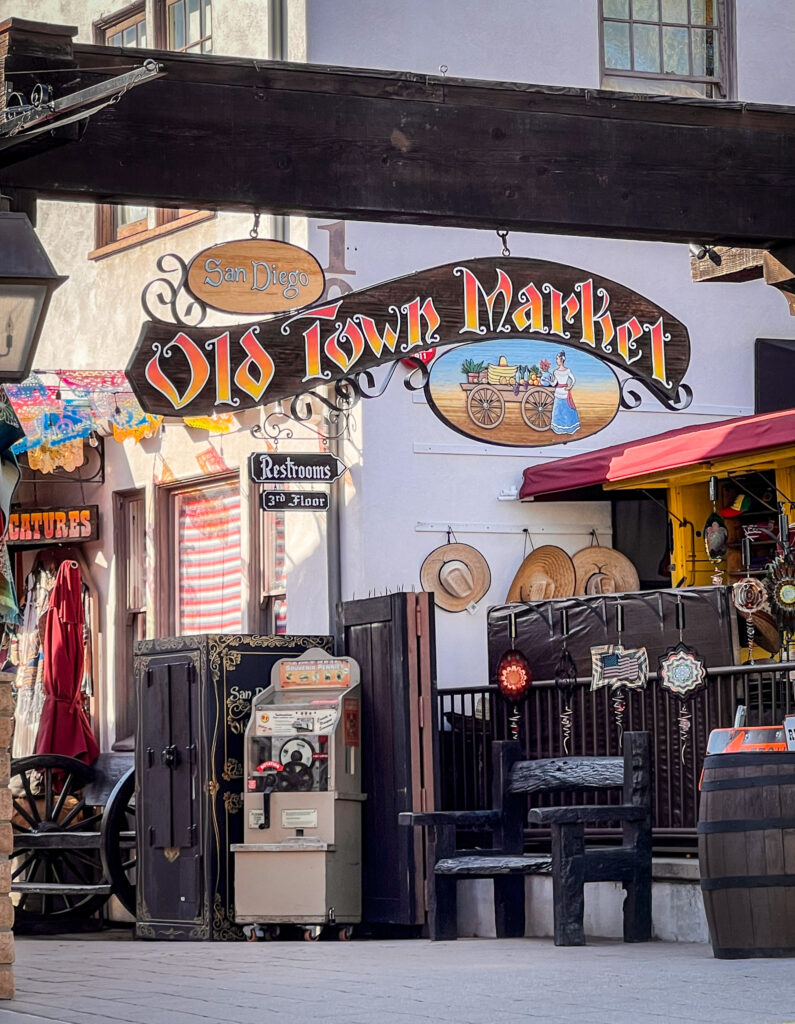
Old Town San Diego
Old Town San Diego is a vibrant tableau of the city’s Mexican heritage, with its historic buildings and lively markets. Pro Tip: The textures and colors of Old Town are its highlights. Explore the area with a wide aperture to focus on details and create a beautiful bokeh in the bustling backgrounds. Visit during cultural events for dynamic and colorful storytelling opportunities.
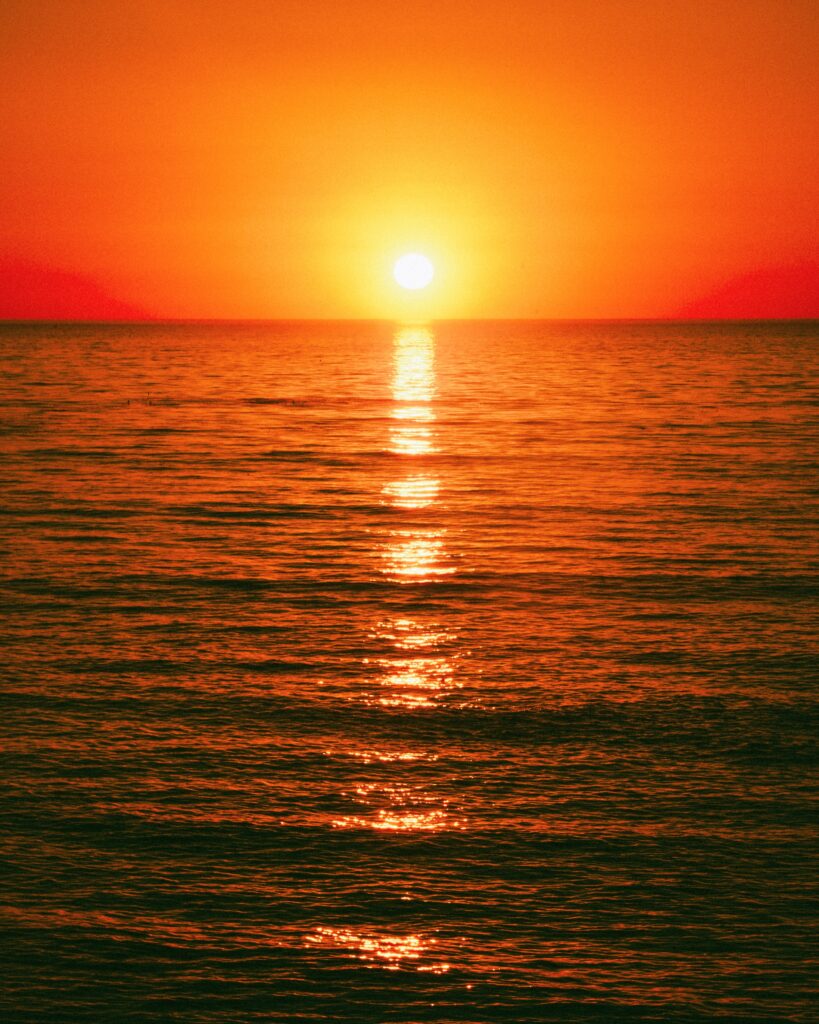
Sunset Cliffs
The name Sunset Cliffs says it all. This location is a spectacle of nature’s beauty as the day comes to an end. Pro Tip: A graduated ND filter can help balance the exposure between the sky and the land, capturing the sunset’s full dynamic range. Long exposures can turn the waves into a misty veil, adding a serene quality to the rugged landscape.
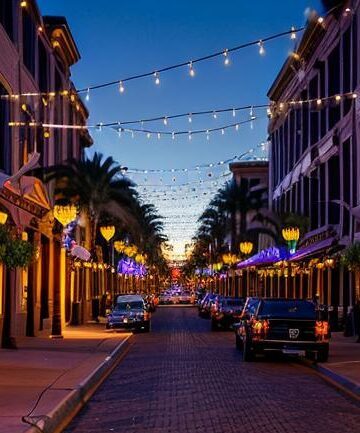
Gaslamp Quarter
The Gaslamp Quarter’s historic architecture, lit by modern neon signs, offers a stark contrast and a perfect subject for night photography. Pro Tip: A tripod and a long exposure can capture the essence of the bustling nightlife, turning moving cars into streams of light. Play with different angles to capture the architectural beauty illuminated by the vibrant neon lights.
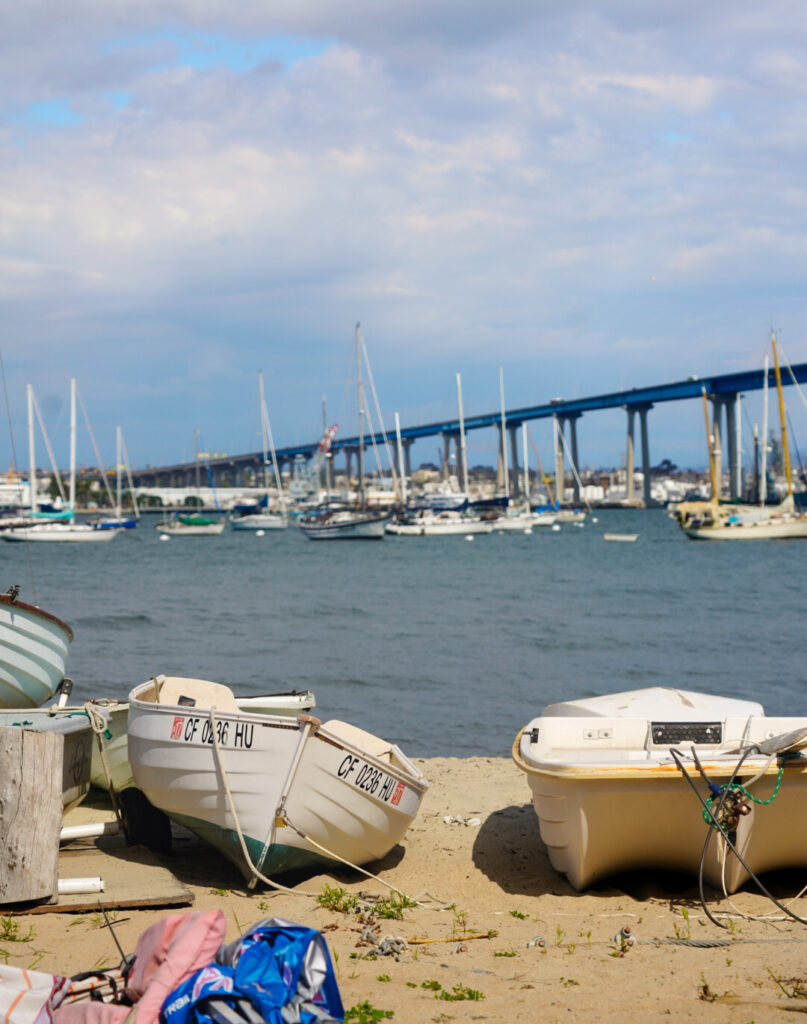
Coronado Island
Coronado Island provides breathtaking views of the San Diego skyline and the iconic Hotel del Coronado. Pro Tip: Sunset or the blue hour are ideal times to photograph the skyline with beautiful color gradients in the sky. Use the beach as a leading line in your compositions to draw the viewer’s eye towards the skyline or the historic hotel.
Capturing San Diego’s Soul
In San Diego, every location offers a unique narrative, ready to be captured through your lens. Embrace each moment, from the serene mornings by the ocean to the vibrant energy of urban nights. The best shot is not just about the place; it’s about how you see it and capture the story it tells.
Final Thoughts for Photographers
While exploring these sites, consider the time of day, the direction of the light, and how different weather conditions might affect your shots. Always have a variety of lenses at your disposal to capture both wide landscapes and detailed close-ups. And finally, patience is key—waiting for the right moment can make all the difference.
Photography is about exploring, seeing, and capturing the world in your unique way. Embark on your photographic journey through San Diego with these locations as your guide, and discover the endless possibilities for capturing stunning images in this vibrant city.
Vintage Camera Collecting: The Polaroid Land Camera Model 95
Introduction
Hello shutterbugs! Very excited to introduce my newest addition to my vintage camera collection, the Polaroid Land Camera Model 95. I found this particular gem at an antique shop near my house, one that I frequent for cameras and record albums. Read on for an overview of this camera, its significance in history, and what I’ve learned from tinkering around with it so far!
The Polaroid Land Camera Model 95
About the Camera
The Polaroid Land Camera Model 95 is a folding camera that used instant film. Introduced in 1948 by Edwin Land, this vintage gem marked a revolutionary chapter in the history of instant photography because it was Land’s first instant picture camera, and was the world’s first commercially successful instant camera. A true pioneer, the Model 95 transformed the way people captured and shared memories, providing instant gratification in the form of a tangible photograph.
A Quick Timeline of the Land Camera Family
The history of Polaroid Land Cameras spans several decades, marked by significant releases and innovations. Here’s a timeline highlighting key Polaroid Land Camera models:
Significance in History
The Model 95 holds a significant place in photographic history as the first camera to use Polaroid’s groundbreaking instant film. Edwin Land’s vision was to create a camera that allowed users to develop and print their photographs within minutes, eliminating the need for external processing. This innovation democratized photography, making it accessible and immediate for the masses.
Unique Characteristics & Innovations
Film Type Used
How It Works
The operation of the Model 95 is relatively straightforward. After framing the shot through the viewfinder, users would press the shutter release button. The internal mechanisms would then eject a print sandwiched between two chemical layers. As the print emerged, it passed through a pair of rollers that evenly spread the developing chemicals, resulting in a finished photograph within minutes.
Taking a Closer Look
When I acquired this camera, I knew that film was no longer produced for it and it wouldn’t work. However, I enjoy learning about the historical aspects of cameras just as much as I enjoy shooting them. I was drawn to the both the camera, and the additional booklets and box that came with it.
Quick Note on Camera Restoration
During my initial evaluation of the camera, I could tell it was well-loved by it’s previous owner but was not properly cared for. It had significant signs of rust and aging, the faux leather was falling off with [what I think was] mold underneath, and the inside of the camera had a black gooey substance that needed to be cleaned. As my vintage camera collection grows, I have become more invested in learning how to care for and restore old cameras. Since film is no longer produced for this Polaroid Land Camera, rendering it useless, I saw this as an opportunity to practice restoring! I pulled out my metal scrub brush, some isopropyl alcohol, and q tips and got to work on an initial sweep of repairs. I didn’t get to the peeling leather yet, but it’s next on my list once I do more research.
Polaroid Land Camera Box & Informational Booklets
As I acquired the Polaroid Land Camera Model 95, I also obtained a product box and instructional booklets along with it. The antique store I purchased from had all on display together, however I’m doubtful that all these would have belonged together in the original packaging. I think this may be a collection of booklets and ads from different “Land Camera era” cameras, and not specific to the Model 95 that I purchased. That being said, I also own a Land Camera Model 80B and an SX-70, so this random mixture of Land Camera items may turn into a fun household display.
More Photos below
Closing Thoughts
The Polaroid Land Camera Model 95 is not just a vintage collection addition; it’s possessing a piece of history. The Model 95’s influence extends far beyond its compact frame, symbolizing the dawn of instant photography and laying the foundation for the countless instant cameras that followed. I’m excited to dive deeper into the artistry and innovation of early cameras, so stay tuned for more vintage camera insights and discoveries on my blog!
If you have any questions, comments, or would like to start a discussion with me on this, please don’t hesitate to contact me!
